The Truth about High Fructose Corn Syrup
Sweet Surprise or Health Demise?
— By Becky Hand, Licensed & Registered Dietitian
Is there something unique about high fructose corn syrup (HFCS) that could lead to weight gain or health problems? Does your body really know the difference between corn syrup, sugar and other sweeteners? That may depend on who you ask. Some people think it’s different and prefer to avoid it. Others say that it’s no different than other sugars, but we should be limiting our intake of all sugars anyway. So either way, most people think it’s good to cut back on all sweeteners, regardless of type.
I once believed that HFCS was different, and therefore a key player in the obesity crisis. But after reviewing the published, peer-reviewed scientific research on HFCS, today my view is different. Read on to find out whether high fructose corn syrup deserves its bad rap and how it really compares with regular sugar.
What is High Fructose Corn Syrup?
High fructose corn syrup (HFCS) is a calorie-providing sweetener used to sweeten foods and beverages, particularly processed and store-bought foods. It is made by an enzymatic process from glucose syrup that is derived from corn. A relatively new food ingredient, it was first produced in Japan in the late 1960s, then entered the American food supply system in the early 1970s. HFCS is a desirable food ingredient for food manufacturers because it is equally as sweet as table sugar, blends well with other foods, helps foods to maintain a longer shelf life, and is less expensive (due to government subsidies on corn) than other sweeteners. It can be found in a variety of food products including soft drinks, salad dressings, ketchup, jams, sauces, ice cream and even bread.
There are two types of high fructose corn syrup found in foods today:
- HFCS-55 (the main form used in soft drinks) contains 55% fructose and 45% glucose.
- HFCS-42 (the main form used in canned fruit in syrup, ice cream, desserts, and baked goods) contains 42% fructose and 58% glucose.
Sugar & High Fructose Corn Syrup
Table sugar (also called sucrose) and HFCS both consist of two simple sugars: fructose and glucose. The proportion of fructose and glucose in HFCS is basically the same ratio as table sugar, which is made of 50% fructose and 50% glucose. Both sweeteners contain the same number of calories (4 calories per gram).
But the fructose and glucose in table sugar are chemically bonded together, and the body must first digest sugar to break these bonds before the body can absorb the fructose and glucose into the bloodstream. In contrast, the fructose and glucose found in HFCS are merely blended together, which means it doesn’t need to be digested before it is metabolized and absorbed into the bloodstream. Because of this, theories abound that HFCS has a greater impact on blood glucose levels than regular sugar (sucrose). However, research has shown that there are no significant differences between HFCS and sugar (sucrose) when it comes to the production of insulin, leptin (a hormone that regulates body weight and metabolism), ghrelin (the “hunger” hormone), or the changes in blood glucose levels. In addition, satiety studies done on HFCS and sugar (sucrose) have found no difference in appetite regulation, feelings of fullness, or short-term energy intake. How can that be?
Well, the body digests table sugar very rapidly, too. And both HFCS and table sugar (sucrose) enter the bloodstream as glucose and fructose—the metabolism of which is identical. There is no significant difference in the overall rate of absorption between table sugar and HFCS, which explains why these two sweeteners have virtually the same effects on the body.
HFCS and Obesity
HFCS hit the food industry in the late 1970s, right when the waistlines of many Americans began to expand. During this time, many diet and activity factors where changing in society. It is a well-researched fact that the current obesity crisis is very much a multi-faceted problem. The American Medical Association (AMA) has extensively examined the available research on HFCS and obesity. This organization has publicly stated that, to date, there is nothing unique about HFCS that causes obesity. It does not appear to contribute more to obesity than any other type of caloric sweetener. However, the AMA does encourage more research on this topic.
But Is It Natural?
High fructose corn syrup has received a lot of blame and bad press lately. Recent marketing campaigns funded by the Corn Refiners Association have tried to improve the reputation of high fructose corn syrup, calling it “natural” among other things. However, it’s important to note that the word “natural” doesn’t mean much. This common food-labeling term is NOT regulated by the Food and Drug Administration (FDA). Let’s face it: Neither table sugar nor HFCS would exist without human interaction and processing. You cannot just go to a field and squeeze corn syrup out of corn or sugar out of sugar beets or sugarcane. “Natural” or not, too much sweet stuff can’t be good for you—even if it comes from what you might think of as natural sweeteners like honey, agave syrup (which is also highly refined and actually higher in fructose than HFCS) or raw sugar.
What about Fructose?
Much of the research cited to demonize HFCS is done specifically on fructose. But as we’ve already learned, fructose is just one component of HFCS, and it is found in table sugar and other sweeteners, too. Fructose also occurs naturally in fresh, whole fruits. So when a study comes out saying that increased “fructose” consumption leads to health problems, weight gain, cancer or other problems, that doesn’t mean that those findings can be applied specifically to HFCS—or to any other fructose-containing food or sweetener. Put simply, what happens in a lab or in animal tests cannot be applied to humans, and definitely doesn’t imply you’d have the same outcome (weight gain, cancer, etc.) by consuming other foods or sweeteners of which fructose is a component.
There is some emerging research showing that high intakes of fructose can lead to a host of health problems. But who consumes that much pure fructose—and all by itself? Does this mean we should avoid fruit? Honey? All things that contain any amount of fructose? Clearly more research needs to be done in this area, but the bottom line remains: We should all be eating fewer sweets, regardless of the source of sweetness.
It’s important that we be wise consumers of health information and read studies like this critically, asking important questions, and making sure not to apply a small lab study to other real-world scenarios that might not fit. For more information on being a savvy reader of nutrition research, click here .
What This Means for You
For years, trainers position (and some registered dietitians) has always been that we are eating too much of the sweet stuff, no matter what the source. When it’s added to your morning coffee, hidden in your can of soda, or baked into your chocolate brownie, sweetened foods are everywhere. The typical American over the age of two consumes more than 300 calories daily from sugar and other caloric sweeteners (including HFCS). That’s 19 teaspoons of sweetener (75 grams) a day! One-sixth of our calorie intake is coming from a food ingredient that provides absolutely no nutritional benefit! This is definitely affecting our weight and overall health. It is time to take charge and cut back! The most recent recommendations suggest:
- Healthy adults who consume approximately 2,000 calories daily should limit the amount of all caloric sweeteners to no more than 32 grams (8 teaspoons) of sugar daily.
- Adults who are consuming approximately 1,200-1,500 calories daily, this would equate to about 19-24 grams (5-6 teaspoons) of sugar each day.
Please note that doesn’t only apply to sugar that you to your morning coffee or oatmeal; it applies to all “hidden” sugars, too, which are found in other processed foods and drinks that you may purchase.
To help curb the sugar monster so you can keep your weight and health in check, follow these tips.
- Always read the ingredients list. Foods you might not even realize are sweetened (like bread, dried fruit and crackers) might be hiding added sugars. Learn to identify terms that mean added sugars on the ingredients list, including sugar, white sugar, brown sugar, cane sugar, confectioner’s sugar, corn syrup, crystallized fructose, dextrin, honey, invert sugar, maple syrup, raw sugar, beet sugar, cane sugar, corn sweeteners, evaporated cane juice, glucose-fructose, granulated fructose, high fructose corn syrup, fructose, malt, molasses, and turbinado sugar. Try to limit foods that have any of these “sugars” as one of the first three ingredients.
- If you take your coffee with sugar, try adding a small piece of cinnamon stick or vanilla bean to your cup. It adds flavor without adding caloric sweeteners.
- When baking, reduce the amount of sugar in the recipe. Most of the time you can reduce the sugar by up to one-third without noticing a difference in the taste or texture of the final product. Now that’s sweet!
- Sweeten other food items with vanilla extract or other “sweet” spices instead of caloric sweeteners. Many times cinnamon, nutmeg, cloves, and allspice can naturally sweeten a recipe.
- Substitute homemade fruit purees for sugar and syrups in recipes. Applesauce (look for varieties made without added sugar) can be substituted for some of the sugar in muffins, breads and baked desserts.
- Top your breakfast waffles or pancakes with fresh fruit compote instead of syrup.
- Limit the amount of regular soda and caloric-sweetened beverages. While artificially sweetened “diet” beverages aren’t exactly health foods, they are one way to cut calories. The healthiest choice is always water. To add a splash of flavor to your water, add lemon or lime juice, other types of 100% fruit juice, or pieces of frozen fruit.
- Skip the calorie-sweetened yogurts that use sugar, honey, syrup, fruit juice, fruit juice concentrate, sugar and HFCS. Buy plain, natural yogurt and sweeten it yourself with fresh fruit, frozen fruit or fruit canned in its own juice.
- Select breakfast cereals with 5 grams of sugar or fewer per serving. Add sweetness with fresh, frozen, or fruit canned in its own juice. Try sliced bananas, canned peaches, frozen blueberries, or fresh strawberries.
- If you’re a juice drinker, buy 100% fruit juices and limit it to 1 cup daily for adults and ½ cup daily for children. Beware of juice “drinks,” fruit punches, and juice cocktails; these contain only a small amount of juice and the rest is water and added caloric sweeteners.
The Truth about High Fructose Corn Syrup Read More »


 by Mike Geary, Certified Personal Trainer, Certified Nutrition Specialist
by Mike Geary, Certified Personal Trainer, Certified Nutrition Specialist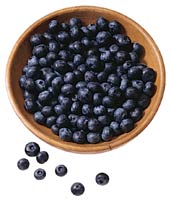 Carbohydrates don’t need to be eliminated… they are not inherently “bad” in reasonable quantities. But grains and processed sugars in particular should be minimized. So to make things simple, you will be leaner and healthier if you get most of your carbohydrates from fruits and vegetables instead of grains and processed sugar.
Carbohydrates don’t need to be eliminated… they are not inherently “bad” in reasonable quantities. But grains and processed sugars in particular should be minimized. So to make things simple, you will be leaner and healthier if you get most of your carbohydrates from fruits and vegetables instead of grains and processed sugar. Focus on quality protein sources such as wild game, wish fish and seafood, grass-fed meats, and free-roaming organically fed eggs, while trying to avoid most farmed meats and farmed fish that were fed mostly grains and kept in unhealthy “factory farm” environments.
Focus on quality protein sources such as wild game, wish fish and seafood, grass-fed meats, and free-roaming organically fed eggs, while trying to avoid most farmed meats and farmed fish that were fed mostly grains and kept in unhealthy “factory farm” environments.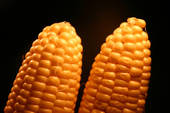 Aside from processed sugar, if I had to pick 3 of the WORST foods in the average western diet that would be most important to start avoiding, it would be corn, soy, and wheat, and their derivatives such as corn syrup, corn oil, soybean oil, soy protein, etc. Do you want to hear an appalling statistic about what the average person eats… Currently, the average adult eating a typical modern western diet in countries such as the US, Canada, Australia, etc consumes approximately 67% of their total caloric intake from only 3 foods — CORN, SOY, AND WHEAT (and their derivatives).
Aside from processed sugar, if I had to pick 3 of the WORST foods in the average western diet that would be most important to start avoiding, it would be corn, soy, and wheat, and their derivatives such as corn syrup, corn oil, soybean oil, soy protein, etc. Do you want to hear an appalling statistic about what the average person eats… Currently, the average adult eating a typical modern western diet in countries such as the US, Canada, Australia, etc consumes approximately 67% of their total caloric intake from only 3 foods — CORN, SOY, AND WHEAT (and their derivatives).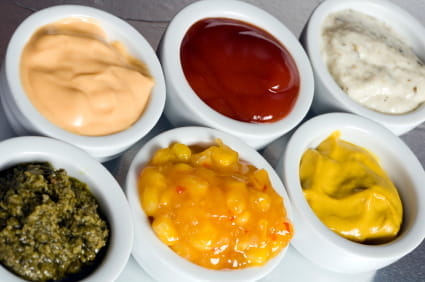 Beware of hidden calories and inflammation-causing ingredients in condiments and dressings.
Beware of hidden calories and inflammation-causing ingredients in condiments and dressings. Speaking of sugar, most people don’t realize that they are addicted to sugar, and just how bad sugar is for your body internally. I hear people say things all the time when eating candy or drinking a sweetened drink that “oh, it’s just sugar, I can burn it off easy”. Oh, if it were only that simple.
Speaking of sugar, most people don’t realize that they are addicted to sugar, and just how bad sugar is for your body internally. I hear people say things all the time when eating candy or drinking a sweetened drink that “oh, it’s just sugar, I can burn it off easy”. Oh, if it were only that simple.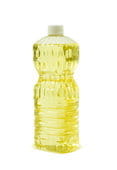 Avoid canola oil as much as possible… despite the false marketing claims that canola oil is “healthy” and contains lots of monounsaturated fats just like olive oil, canola oil is NOTHING like olive oil from a biochemical standpoint and how it reacts internally in your body.
Avoid canola oil as much as possible… despite the false marketing claims that canola oil is “healthy” and contains lots of monounsaturated fats just like olive oil, canola oil is NOTHING like olive oil from a biochemical standpoint and how it reacts internally in your body.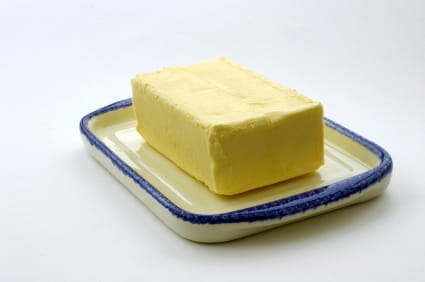 Butter vs margarine? I have no idea why anybody is still debating this… I use grass-fed butter on a daily basis, but I would NEVER even touch margarine… not even the so-called “healthy” margarines, which usually still contain inflammatory soybean or corn oils. REAL butter is the only answer in this case.
Butter vs margarine? I have no idea why anybody is still debating this… I use grass-fed butter on a daily basis, but I would NEVER even touch margarine… not even the so-called “healthy” margarines, which usually still contain inflammatory soybean or corn oils. REAL butter is the only answer in this case. Egg whites vs whole eggs? Once again, I have no idea why anyone is still debating this. Most of the general population has still not gotten the memo that egg yolks are actually the healthiest part of the egg, with over 90% of the micronutrients and antioxidants, and 100% of the fat soluble vitamins that are so important for our health. Why anybody would only eat egg whites and avoid yolks is beyond comprehension. And no, the dietary cholesterol is eggs is not bad for your heart… in fact, it increases your good HDL cholesterol.
Egg whites vs whole eggs? Once again, I have no idea why anyone is still debating this. Most of the general population has still not gotten the memo that egg yolks are actually the healthiest part of the egg, with over 90% of the micronutrients and antioxidants, and 100% of the fat soluble vitamins that are so important for our health. Why anybody would only eat egg whites and avoid yolks is beyond comprehension. And no, the dietary cholesterol is eggs is not bad for your heart… in fact, it increases your good HDL cholesterol. Beware of the carcinogenic and estrogenic chemical BPA that is commonly found in some canned foods and bottled drinks. BPA has been linked to increased abdominal fat, birth defects, cancer, and more. Remember that canned tomatoes are one of the worst offenders with highest concentrations of harmful BPA because of the acidic leaching effect of the tomatoes.
Beware of the carcinogenic and estrogenic chemical BPA that is commonly found in some canned foods and bottled drinks. BPA has been linked to increased abdominal fat, birth defects, cancer, and more. Remember that canned tomatoes are one of the worst offenders with highest concentrations of harmful BPA because of the acidic leaching effect of the tomatoes. One of the healthiest things to include in your daily diet are herbs and spices. In fact, herbs and spices typically contain LOADS more antioxidants than most fruits and vegetables. Spices are extremely powerful, and almost medicinal for your body. Turmeric has been shown to have protective effects against cancer. Cinnamon has powerful blood sugar controlling effects. Many spices boost your immune system. .
One of the healthiest things to include in your daily diet are herbs and spices. In fact, herbs and spices typically contain LOADS more antioxidants than most fruits and vegetables. Spices are extremely powerful, and almost medicinal for your body. Turmeric has been shown to have protective effects against cancer. Cinnamon has powerful blood sugar controlling effects. Many spices boost your immune system. .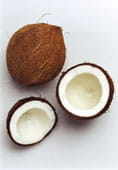 Remember that despite all of the bad nutrition information you hear from the government and the media, saturated fats have been falsely villified in the past, and are much healthier for you than most people realize. In fact, in recent years, scientists have become a lot more clear that saturated fats are actually important for health and hormone balance, your cell membranes, and many other vital functions in your body.
Remember that despite all of the bad nutrition information you hear from the government and the media, saturated fats have been falsely villified in the past, and are much healthier for you than most people realize. In fact, in recent years, scientists have become a lot more clear that saturated fats are actually important for health and hormone balance, your cell membranes, and many other vital functions in your body. Pay attention to your Vitamin D levels.
Pay attention to your Vitamin D levels.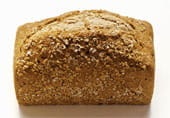 Beware of carcinogenic acrylamides in browned carb-based foods. This is yet another reason to minimize grains as much as possible as breads and cereals are some of the worst offenders with acrylamides.
Beware of carcinogenic acrylamides in browned carb-based foods. This is yet another reason to minimize grains as much as possible as breads and cereals are some of the worst offenders with acrylamides. Avoid the unknown health consequences of eating genetically modified foods. Again, going back to the principle that we are most adapted to eating what our ancesters ate for almost 2 million years, that list of foods obviously did NOT include genetically modified foods, since these “frankenfoods” weren’t included in the human food supply until the 1990’s.
Avoid the unknown health consequences of eating genetically modified foods. Again, going back to the principle that we are most adapted to eating what our ancesters ate for almost 2 million years, that list of foods obviously did NOT include genetically modified foods, since these “frankenfoods” weren’t included in the human food supply until the 1990’s.